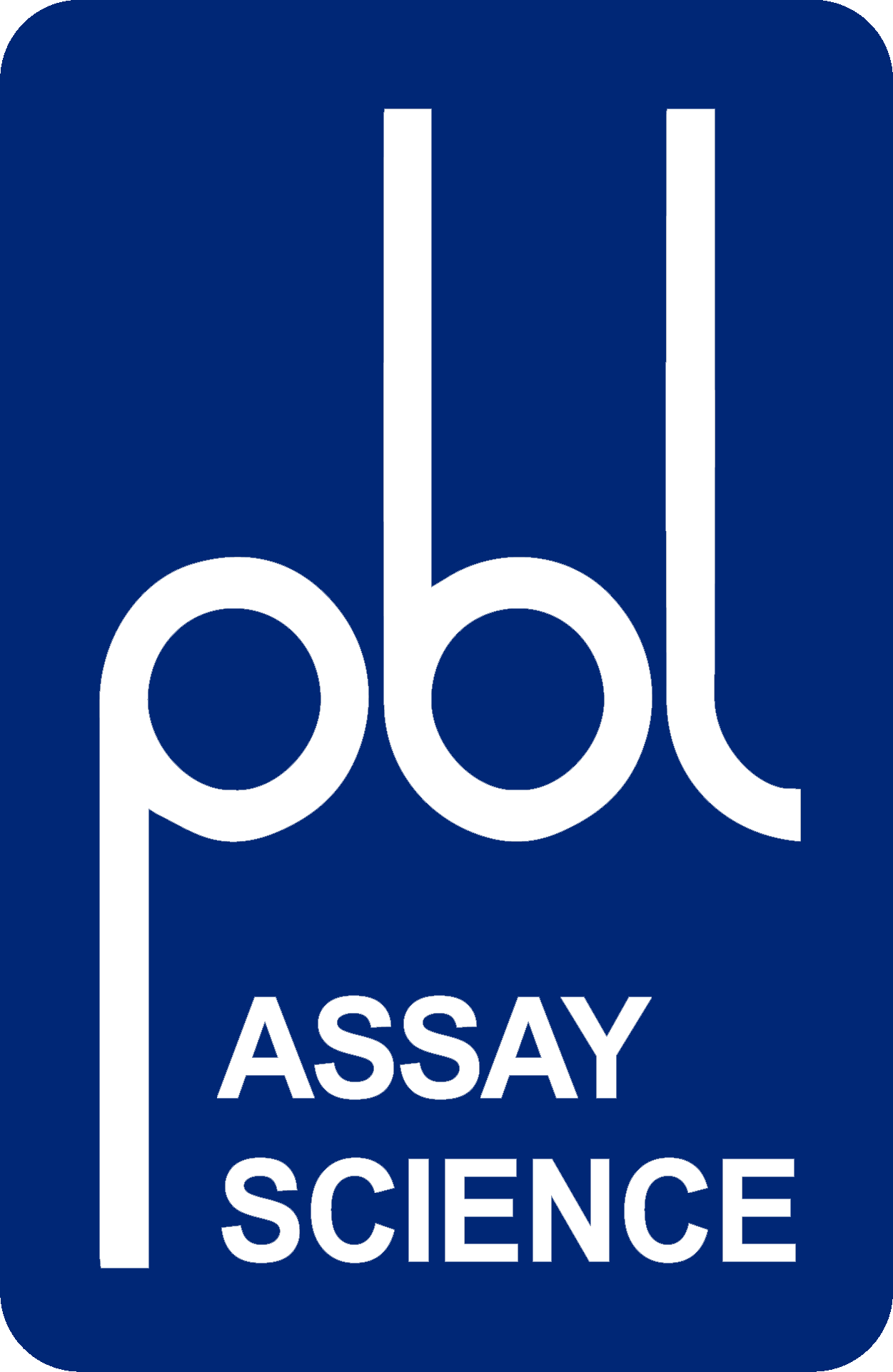Anti-Mouse IFN-Beta, Clone RMMB-1 (MAb)
Catalog Number: 22400
This unconjugated Rat monoclonal antibody against Mouse Interferon Beta is suitable for use in Direct Binding ELISAs and binds to mouse interferon beta (weakly neutralizes).
$405.00
Product Info
Specificity
Weakly neutralizes mouse IFN-Beta, but not recommended for neutralization assays (for this application product 32401-1 is recommended); binds to mouse IFN-Beta
Tested Application
Note: PBL has not tested the use of this product in Western Blot (WB), flow cytometry, immunoprecipitation or immunohistochemistry.
Specifications
| Formulation | Supplied frozen in phosphate-buffered saline (PBS) containing 0.1% Bovine Serum Albumin (BSA) |
|---|---|
| Antigen | Mouse interferon beta |
| Isotype | IgG2ak |
| Host Species | Rat |
| Purity | > 95% by SDS-PAGE stained by Coomassie Blue Endotoxin level < 1 EU/μg |
| Bioactivity | Measured by neutralization of interferon in cytopathic effect inhibition assay |
| Storage | For retention of full activity store at -20°C or below and avoid repeated freeze/thaw cycles |
| Antigen Synonyms | Mouse IFN Beta, Mouse Beta Interferon, Mouse IFNB, Mouse Type I IFN beta, Mouse Fibroblast IFN, Mouse Fibroblast Interferon, Mouse Beta IFN, Mouse Type I Interferon Beta |
| Clone | RMMB-1 |
Citations
10 Citations
- Silveira Prudente, A. et al., (2024), "Microglial STING activation alleviates nerve injury-induced neuropathic pain in male but not female mice", Brain Behav Immun., PMID: 38190983, DOI: 10.1016/j.bbi.2024.01.003 (link)
- Heidegger, S., et al., (2023), "Targeting nucleic acid sensors in tumor cells to reprogram biogenesis and RNA cargo of extracellular vesicles for T cell-mediated cancer immunotherapy", Cell Rep Med., 101171, PMID: 37657445, DOI: 10.1016/j.xcrm.2023.101171 (link)
- Sivick, Kelsey, et al. (2018). Magnitude of Therapeutic STING Activation Determines CD8+ T Cell-Mediated Anti-tumor Immunity. Cell Reports, 18 pgs. PMID: 30540940. (link)
- Francica, Brian, et al. (2018). TNFα and Radioresistant Stromal Cells Are Essential for Therapeutic Efficacy of Cyclic Dinucleotide STING Agonists in Nonimmunogenic Tumors. Cancer Immunology Research, 25 pgs. PMID: 29472271. (link)
- von Buttlar, Heiner, et al. (2014). Identification of Toll-Like Receptor 9 as Parapoxvirus Ovis-Sensing Receptor in Plasmacytoid Dendritic Cells. PLOS One, 8 pgs. PMID: 25171368. (link)
- Sutherland, DB, et al. (2011). Evaluating vaccinia virus cytokine co-expression in TLR GKO mice. Immunology and Cell Biology. PMID: 21173782. (link)
- Horkheimer, Ian, et al. (2009). Induction of type I IFN is required for overcoming tumor-specific T-cell tolerance after stem cell transplantation. Blood Journal, 19 pgs. PMID: 19279333. (link)
- Roth-Cross, Jessica, et al. (2008). Murine Coronavirus Mouse Hepatitis Virus is Recognized by MDA5 and Induces Type I Interferon in Brain Macrophages/Microglia. JVI, 11 pgs. PMID: 18667505. (link)
- Qin, Lizeng, et al. (2007). Effects of Type I Interferons on the Adjuvant Properties of Plasmid Granulocyte-Macrophage Colony-Stimulating Factor In Vivo. JVI, 8 pgs. PMID: 17652387. (link)
- Zhu, Jiangao, et al. (2007). Innate Immune Response to Adenoviral Vectors Is Mediated by both Toll-Like Receptor-Dependent and -Independent Pathways. JVI, 11 pgs. PMID: 17229689. (link)

